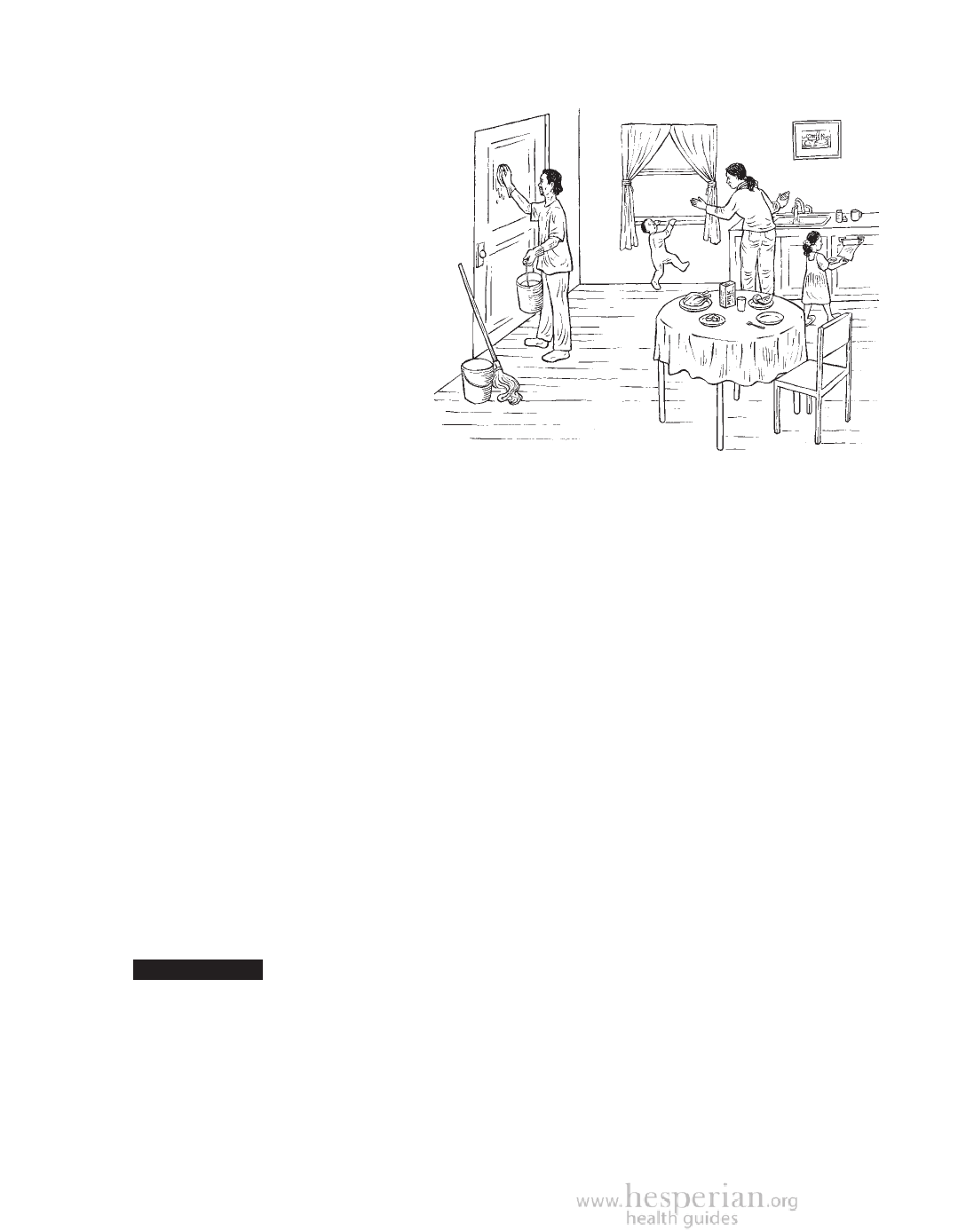
370 A Healthy Home
Prevent poisoning from lead paint
When paint becomes old or is
poorly applied, it breaks down
and often peels or flakes off of
walls, railings, and furniture.
These flakes can be easily
breathed in or swallowed by
small children. If the paint has
lead in it, this is very harmful.
The best way to prevent lead
poisoning from old paint is to
remove it from surfaces and
repaint with paint that does not
contain lead.
When removing old paint:
• Always wear gloves, masks,
and safety glasses.
Cleaning surfaces often with a wet cloth will help
reduce exposure to dust and flakes from lead paint.
• Keep children away from work areas or from playing in areas that may
be contaminated.
• To keep paint dust out of the air, wet surfaces with water as you sand
and scrape.
• Clean up all paint dust carefully after each work session. Use damp
mops and rags, not a broom.
• Collect paint flakes and dust in a tin can or other strong container, seal
in plastic bags, and bury in a safe burial pit (see page 438).
Prevent poisoning from lead water pipes
Some signs that your water may be contaminated with lead are rust-colored
water and stained dishes and laundry. Water from lead pipes should never be
used to prepare infant formula, and if possible lead pipes should be replaced
with pipes made of iron, copper, or plastic.
Because lead from pipes dissolves in hot water more easily than it does
in cold water, it is better not to use hot water from lead pipes for cooking or
drinking. Let the water run until it is as cold as possible before using it.
Some water filters will filter out lead (see Resources).
important: Boiling water does not get rid of lead, it makes it worse!
To prevent lead poisoning from outside air pollution
To trap some dust from outside that may contain lead, put damp rags under
doors and in windows. To reduce lead poisoning in the air, governments and
industry must work together to reduce the use of lead in industrial products
and restrict how much air pollution industries are allowed to create.
A Community Guide to Environmental Health 2012